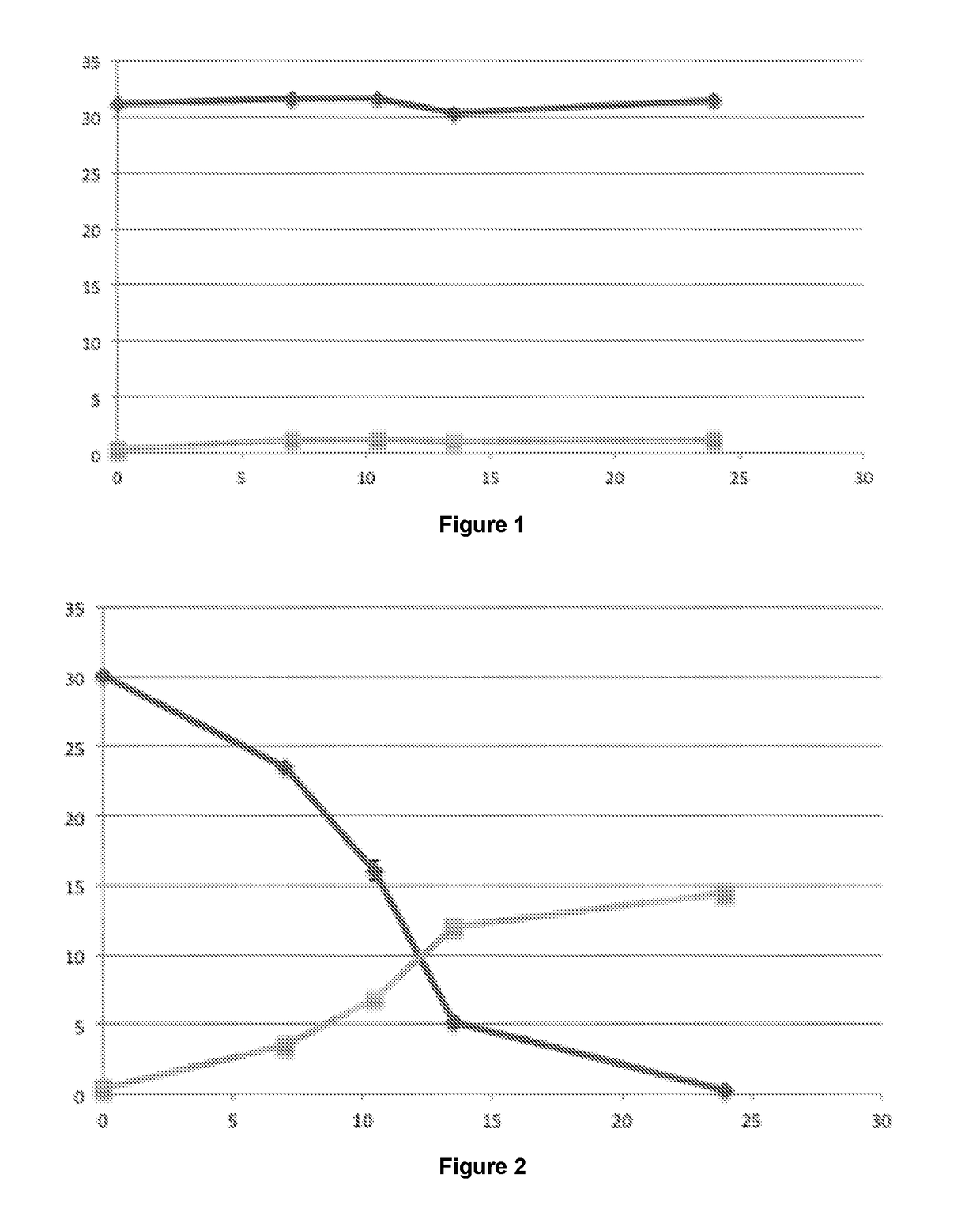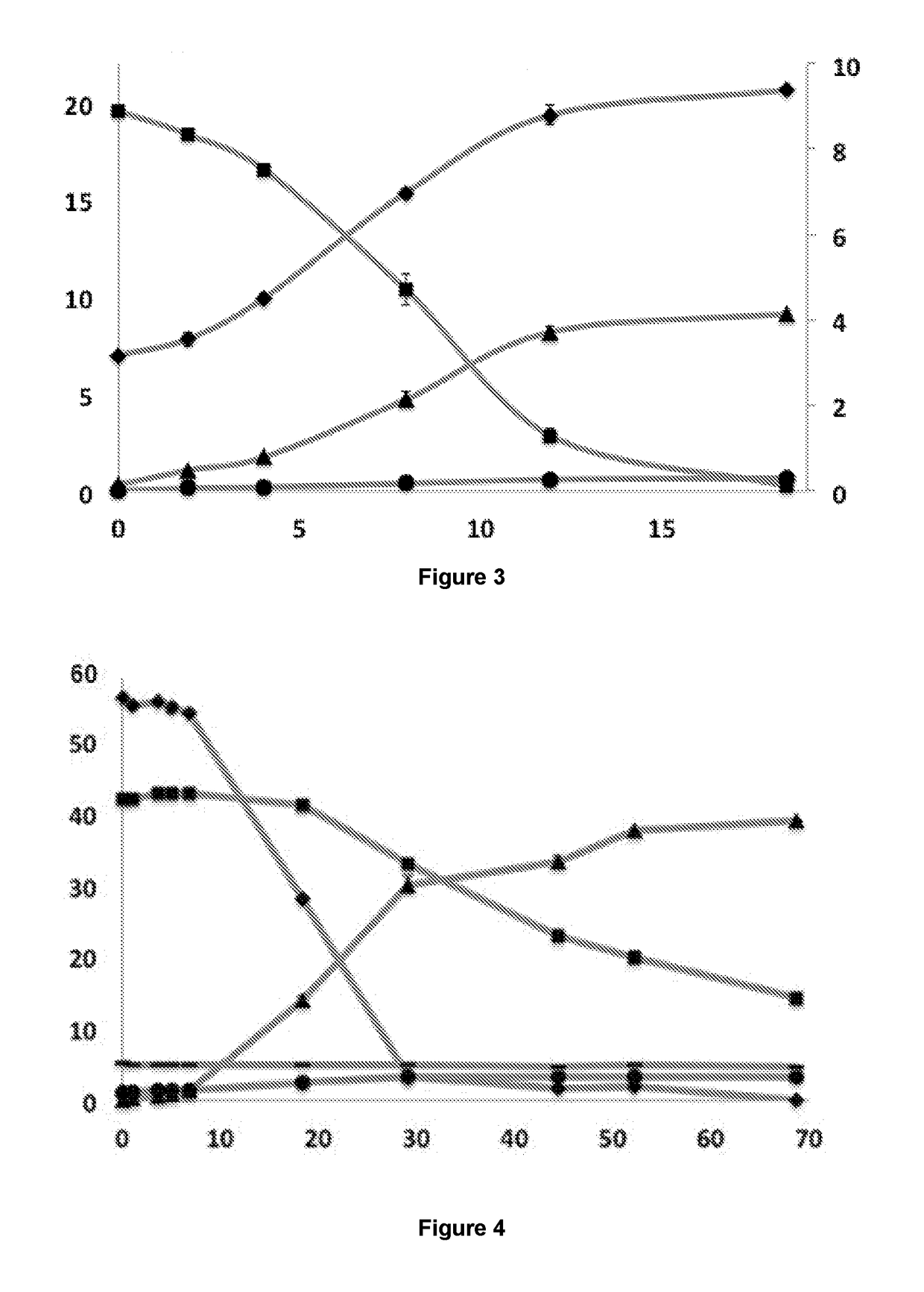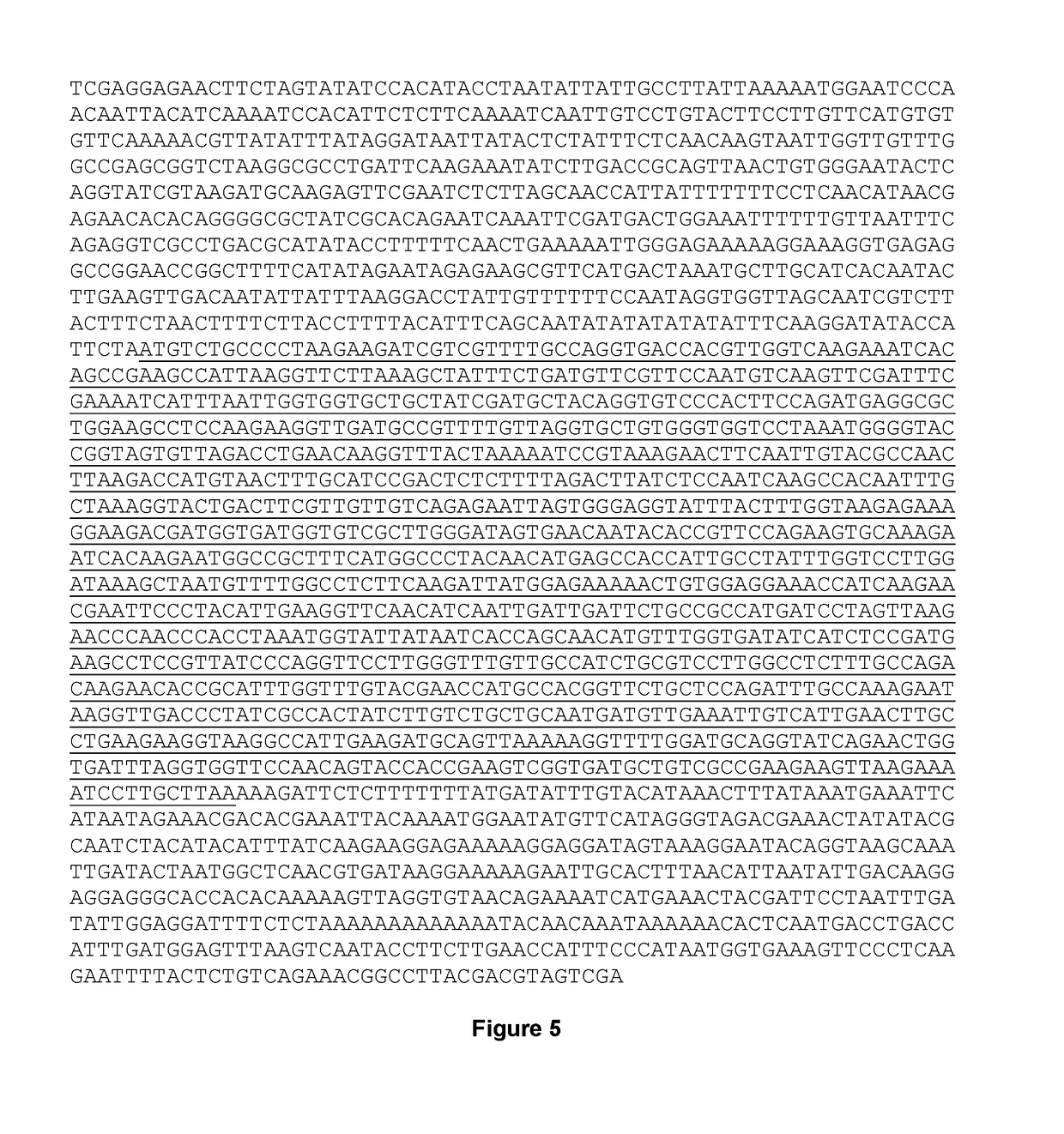Expression cartridge for the transformation of eukaryotic cells, method for transforming eukaryotic cells, genetically modified organism, method for producing biofuels and/or biochemicals, and thus produced biofuel and/or biochemical
a technology of expression cartridges and eukaryotic cells, which is applied in the field of expression cartridges for the transformation of eukaryotic cells, and the method of transforming eukaryotic cells, and the method of thus producing biofuels and/or biochemicals. it can solve the problems of reducing the yield of ethanol, reducing the efficiency of industrial production, and reducing the production cost. , the effect of low formation
- Summary
- Abstract
- Description
- Claims
- Application Information
AI Technical Summary
Benefits of technology
Problems solved by technology
Method used
Image
Examples
example 1
Construction of Cassettes for the Expression and Insertion Thereof into the Genome
[0118]For constructing each one of the cassettes containing genes of non-oxidative phase of the pentoses phosphate route, including gene of Xylose Isomerase, each one of genes was amplified by PCR of the S. cerevisiae genome and cloned in integrative expression cassettes.
[0119]Adjacent to the terminator of each cassette, the flanked URA3 gene was cloned by two IoxP regions in the same orientation, allowing this region to be removed by the expression of Cre recombinase and the URA3 auxotrophic marker to be used in all expression cassettes with the described genes.
[0120]With regard to the construction of the expression cassette which contains gene encoding xylose isomerase, in addition to the above-mentioned construction, in the cassette ends, 126 pb were cloned from each side with homology to a region close to the chromosome five of Saccharomyces cerevisiae, allowing the integration through homologous r...
example 2
Insertion of Cassette of Xylose Isomerase into the Genome in High Number of Copies
[0126]To guarantee the stable integration and high number of copies in the host cell, the cassette expressing the Xylose Isomerase represented by SEQ ID NO: 1 was modified with the inclusion, in the cassette ends, of delta elements of retrotransposon Ty1 (element present in high number of copies in to S. cerevisiae genome).
[0127]The URA3 marker flanked by the IoxP regions is replaced in this plasmid by the LEU2 marker. Previously, the LEU2 gene is deleted in a step of genetic manipulation. In this step, the URA3 gene, flanked by the IoxP regions adjacent to the homology regions to the promoter and terminator of LEU2 is integrated, resulting in the deletion of this gene. Then, the XI cassette is inserted, flanked by the Ty1elements and using the LEU2 auxotrophic marker for selecting transformants.
example 3
Deletion of Gre3 Gene
[0128]The deletion of GRE3 gene, which encodes aldose reductase and is represented in SEQ ID NO: 14, was carried out in two steps through the genetic manipulation, aiming to reduce the production of xylitol from xylose. In the first step, the URA3 gene, flanked by the IoxP regions adjacent to the homology regions to the promoter and terminator of the GRE3 gene was integrated, resulting in the deletion of this region. In the second step, after the deletion confirmed, the URA3 marker was removed by transient expression of Cre recombinase.
PUM
| Property | Measurement | Unit |
|---|---|---|
| OD | aaaaa | aaaaa |
| volume | aaaaa | aaaaa |
| volume | aaaaa | aaaaa |
Abstract
Description
Claims
Application Information
 Login to View More
Login to View More - R&D
- Intellectual Property
- Life Sciences
- Materials
- Tech Scout
- Unparalleled Data Quality
- Higher Quality Content
- 60% Fewer Hallucinations
Browse by: Latest US Patents, China's latest patents, Technical Efficacy Thesaurus, Application Domain, Technology Topic, Popular Technical Reports.
© 2025 PatSnap. All rights reserved.Legal|Privacy policy|Modern Slavery Act Transparency Statement|Sitemap|About US| Contact US: help@patsnap.com



